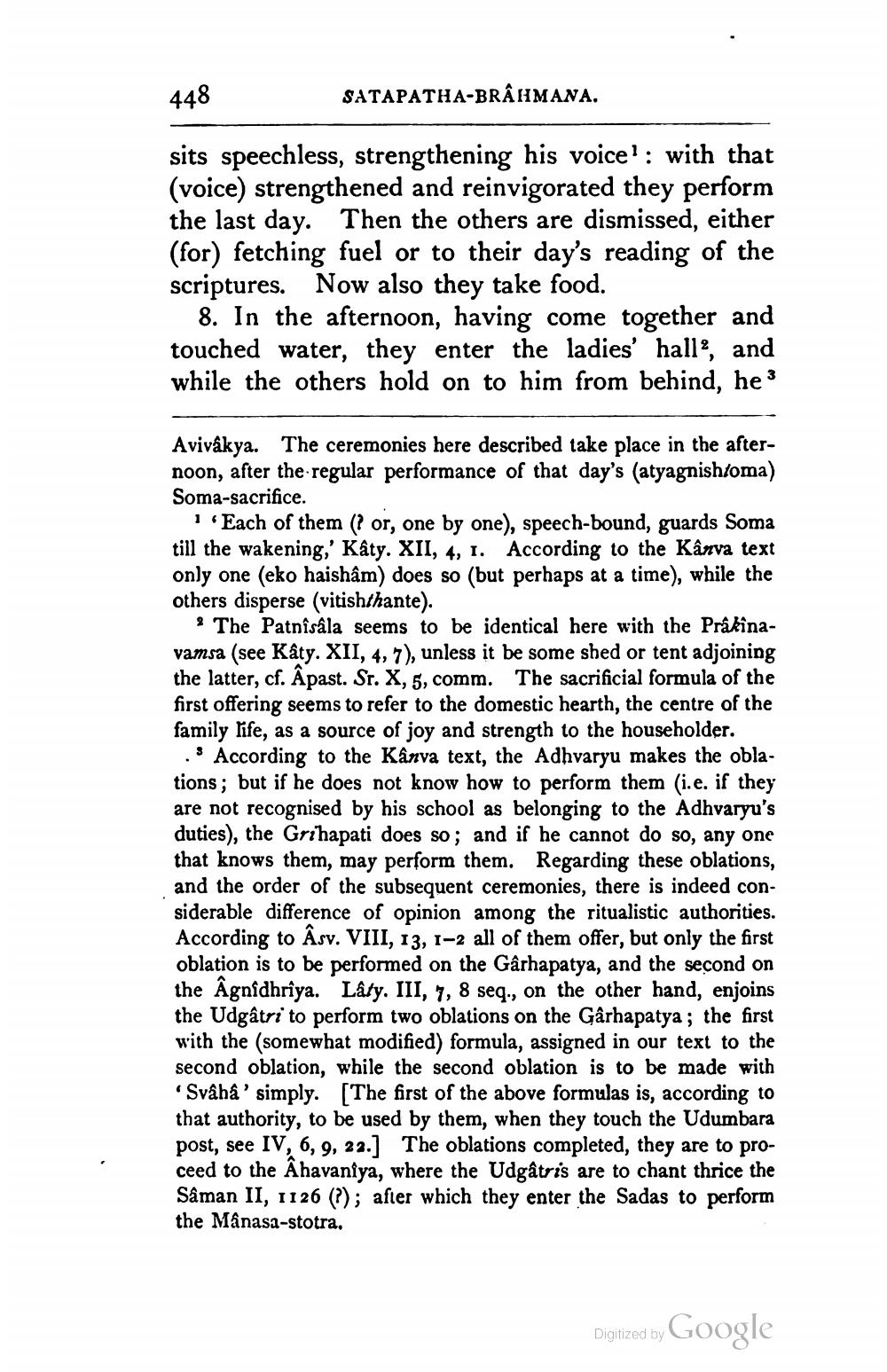________________
448
sits speechless, strengthening his voice': with that (voice) strengthened and reinvigorated they perform the last day. Then the others are dismissed, either (for) fetching fuel or to their day's reading of the scriptures. Now also they take food.
8. In the afternoon, having come together and touched water, they enter the ladies' hall, and while the others hold on to him from behind, he 3
SATAPATHA-BRAHMANA.
Avivâkya. The ceremonies here described take place in the afternoon, after the regular performance of that day's (atyagnish/oma) Soma-sacrifice.
1 'Each of them (? or, one by one), speech-bound, guards Soma till the wakening,' Kâty. XII, 4, 1. According to the Kânva text only one (eko haishâm) does so (but perhaps at a time), while the others disperse (vitishthante).
2 The Patnîsâla seems to be identical here with the Prâkînavamsa (see Kâty. XII, 4, 7), unless it be some shed or tent adjoining the latter, cf. Âpast. Sr. X, 5, comm. The sacrificial formula of the first offering seems to refer to the domestic hearth, the centre of the family life, as a source of joy and strength to the householder.
According to the Kânva text, the Adhvaryu makes the oblations; but if he does not know how to perform them (i.e. if they are not recognised by his school as belonging to the Adhvaryu's duties), the Grihapati does so; and if he cannot do so, any one that knows them, may perform them. Regarding these oblations, and the order of the subsequent ceremonies, there is indeed considerable difference of opinion among the ritualistic authorities. According to Âsv. VIII, 13, 1-2 all of them offer, but only the first oblation is to be performed on the Gârhapatya, and the second on the Agnîdhrîya. Lâty. III, 7, 8 seq., on the other hand, enjoins the Udgâtri to perform two oblations on the Gârhapatya; the first with the (somewhat modified) formula, assigned in our text to the second oblation, while the second oblation is to be made with 'Svâhâ' simply. [The first of the above formulas is, according to that authority, to be used by them, when they touch the Udumbara post, see IV, 6, 9, 22.] The oblations completed, they are to proceed to the Ahavaniya, where the Udgâtris are to chant thrice the Sâman II, 1126 (?); after which they enter the Sadas to perform the Mânasa-stotra.
Digitized by
Google




